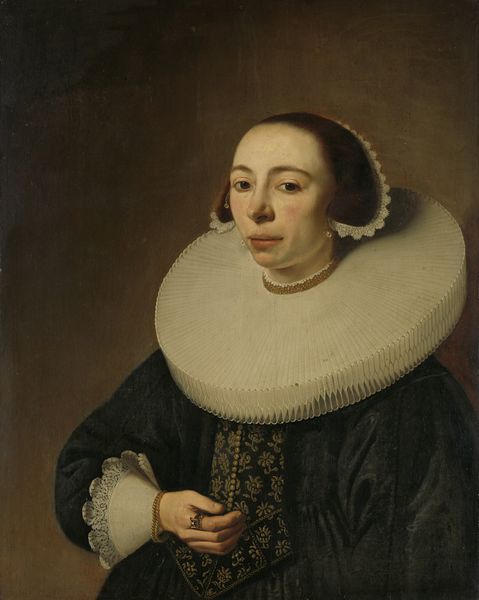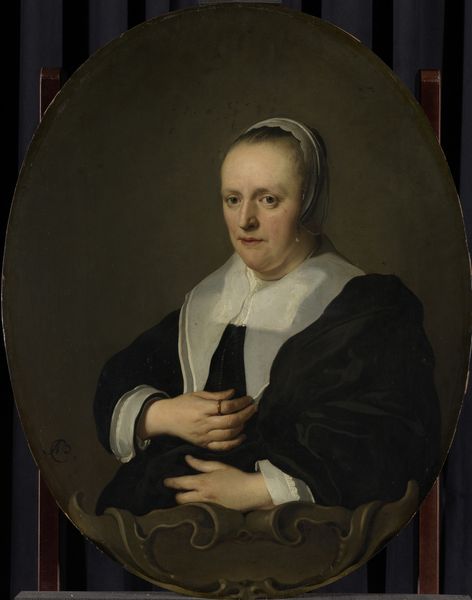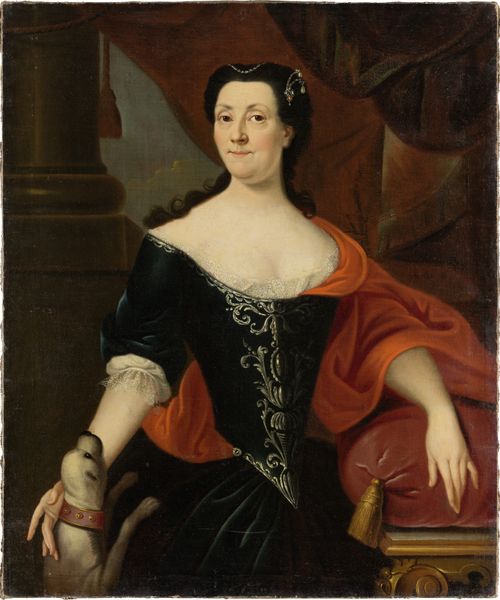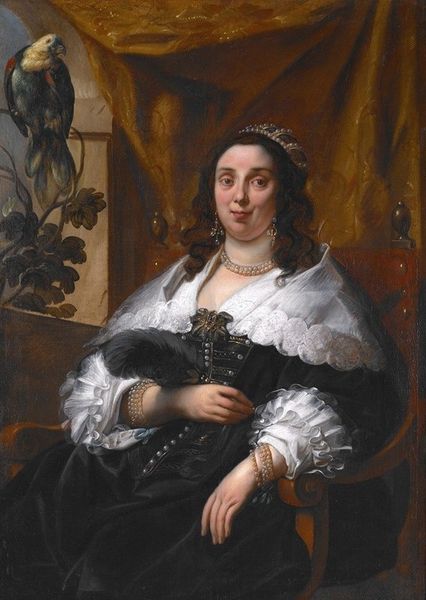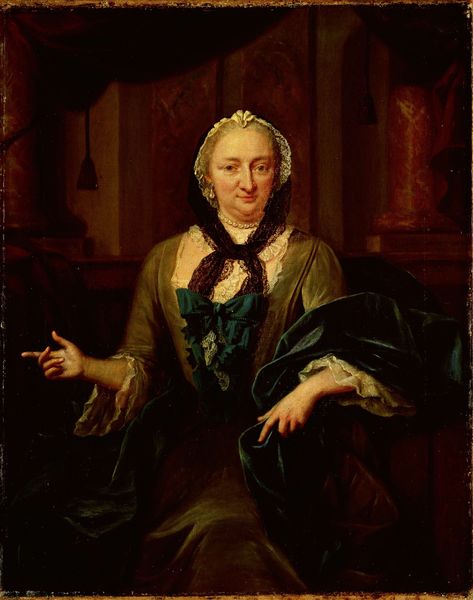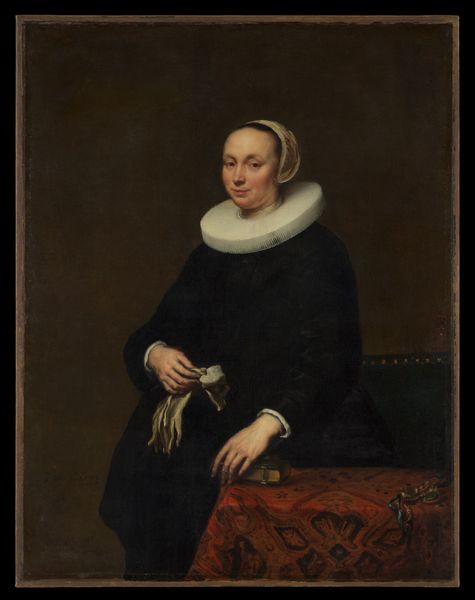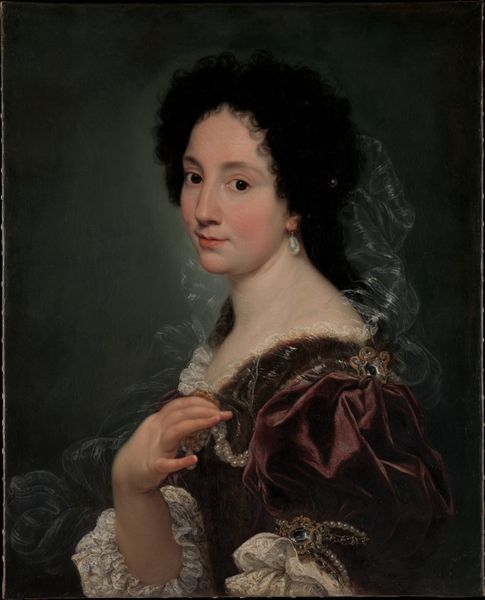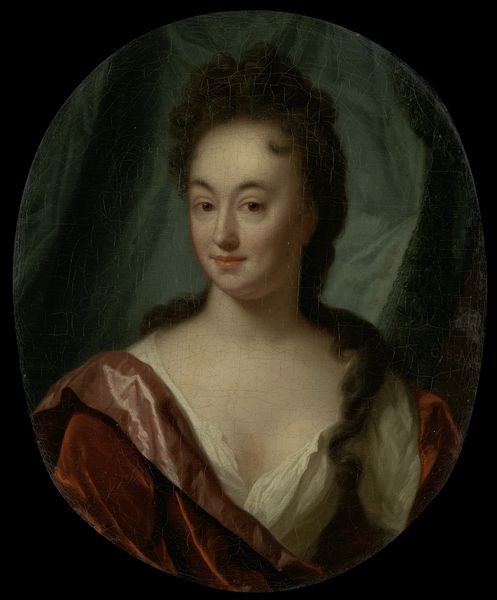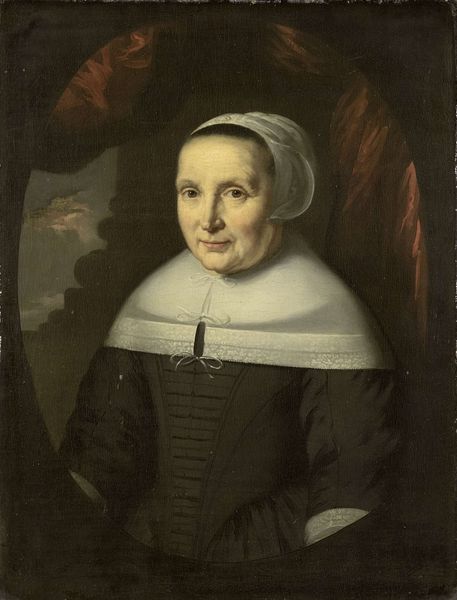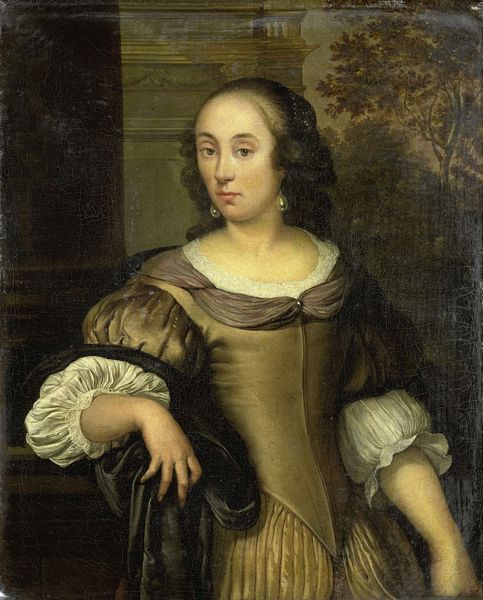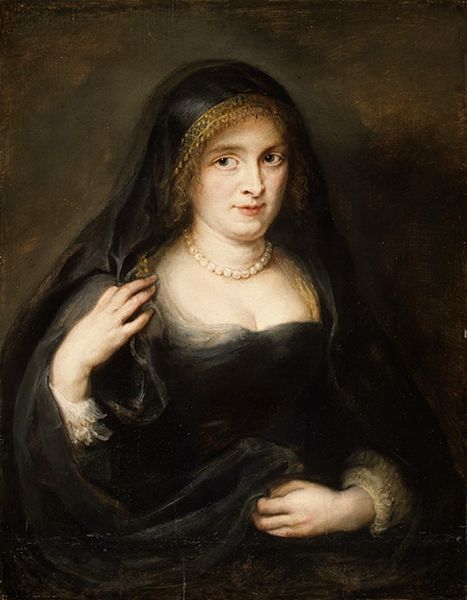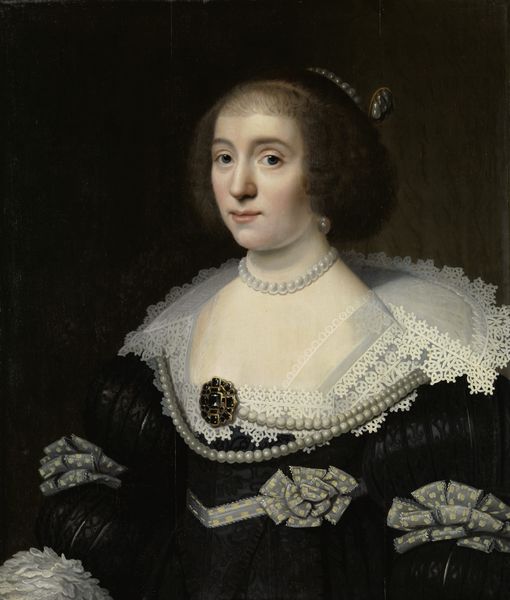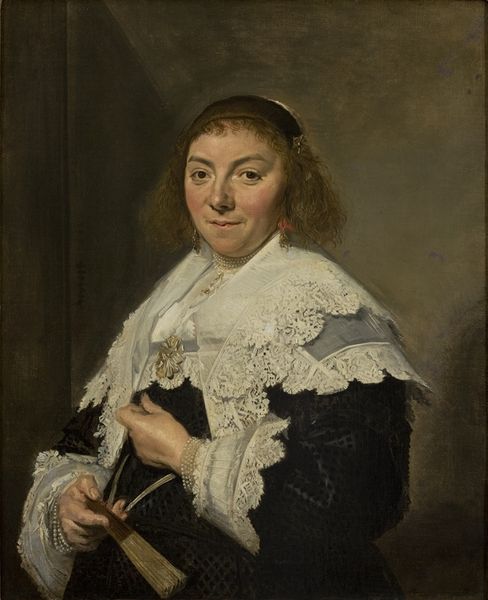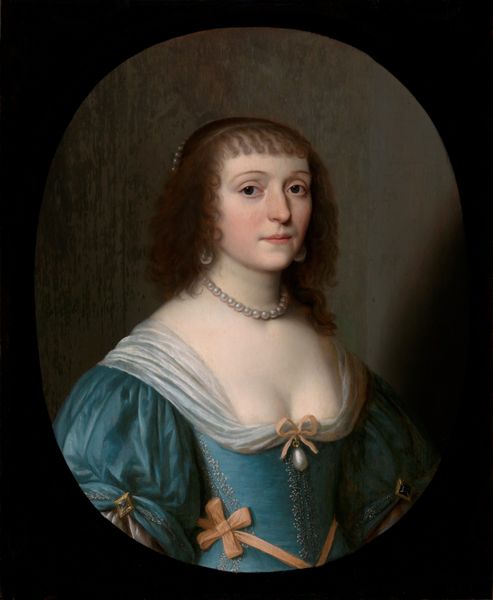
painting, oil-paint
#
portrait
#
baroque
#
painting
#
oil-paint
#
figuration
Copyright: Public domain
Editor: We’re looking at "Portret Van Elisabeth Dell" from 1653, painted by Ferdinand Bol. It's an oil painting... I’m really struck by how dark and velvety it appears. The sheen on the drapery behind her is particularly noticeable. What can you tell us about it? Curator: Considering Bol’s context, we can analyze the materials used and the labor involved. The pigment choices—the deep blacks and rich browns—speak to the economic reach of the sitter and, by extension, Bol's patron base. How do the materials themselves become signifiers of social standing here? Editor: So, the darkness of her dress and the backdrop isn't just an aesthetic choice, but a statement of wealth because the materials to make such deep and rich dark paints would have been expensive? Curator: Precisely. Think of the origin of those pigments: were they locally sourced or imported? Who was involved in their processing and distribution? Every material choice reflects a network of production and consumption tied to Elisabeth Dell's status and to Bol's success within that social structure. Even the quality of the linen canvas underneath played a crucial role. How would mass produced canvas effect paintings of this nature now? Editor: Interesting! It changes my whole view of the piece to think about all the layers of production represented just by the colors and materials alone, beyond just the subject matter of the portrait itself. Curator: Exactly. And this understanding challenges a purely aesthetic appreciation, directing our gaze toward the socioeconomic forces that shaped both the creation and reception of the artwork. What have we seen, but also what did it cost to see it? Editor: I hadn't considered it from that angle before. Looking at it this way opens up so many more questions than simply observing the surface. Curator: Indeed. And that’s how we gain a much deeper and more nuanced perspective on not just the artwork, but the world in which it was made and continues to exist.
Comments
No comments
Be the first to comment and join the conversation on the ultimate creative platform.
